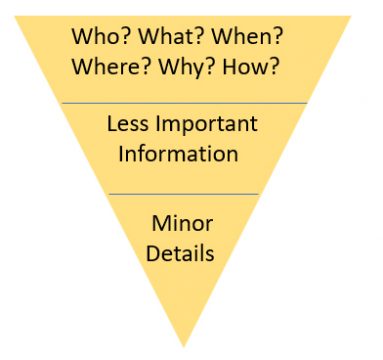Monday, October 21, 2019
 If you learned how to write press releases in college, you might be following rules that are hurting instead of helping your chances for publicity and website traffic.
If you learned how to write press releases in college, you might be following rules that are hurting instead of helping your chances for publicity and website traffic.
My free updated course, 89 Ways to Write Powerful Press Releases, covers each of these in detail. Here’s a quick summary of tips you may have learned years ago that you don’t need to follow anymore.
1. Write only for journalists.
Truth is, journalists hate press releases because so many publicity seekers write them so poorly.
So why do we bother at all? Because a well-written release, when used in conjunction with a compelling pitch, can result in media interviews. If journalists aren’t interested, your press release and the pitch are history. Here’s an explanation of the difference between a press release and a pitch.
The same release meant for a journalist who might promptly ignore it can live forever online and pull traffic to your website. That includes sales pages, your store, a catalog, or a page that offers an enticing freebie in exchange for an email address.
Today, we write primarily for consumers who don’t know us. Many have a specific problem. Looking for answers, they type their questions into the Google search box. Google delivers a list of relevant websites that can help them. Write your press release correctly and it might show up in search.
2. Use the phrase FOR IMMEDIATE RELEASE.
You often see this at the top of many press releases, and it signals that it’s OK to “release” or share the information.
Forgot it. Today, readers assume that if it’s a press release, the information is meant to be read and distributed to the masses.
3. For major news, embargo the release until a specific time and date.
This will really make you look clueless. If you don’t want news made public, don’t publish it online.
Today’s 24/7 news cycle, and stiff competition between media outlets and websites, almost guarantee that no one will honor the embargo, especially journalists and sites that curate news and want millions of clicks.
Here’s what PR pros and journalists have to say about whether the embargo has a place in modern PR.
4. Write in the inverted pyramid style.
This was the rule when we wrote only for journalists. It meant keeping the most important information in the first paragraph and the least important in the last paragraph.

If a story was too long for the allotted space, an editor could cut it starting from the bottom, thus ensuring that the vital facts wouldn’t disappear.
Today, the art of storytelling makes releases come alive. But it’s difficult to tell a compelling story when you’re too busy cramming most of the important facts into the first paragraph.
5. Don’t promote a product or service.
This rule was meant to stay in the good graces of journalists who frowned on self-promotion.
Because we don’t write solely for journalists anymore, feel free to promote in ways that help your audience. They include:
- One or two links to web pages where you’re selling a product or service.
- Links to articles that promote your expertise.
- A link to a video that demonstrates how to use your product.
- A link to a video that shows an author reading an excerpt from her book.
- A call to action that includes a link. You can tell readers to do whatever you want them to do: reserve tickets for an event, click on a link that helps promote your expertise, opt in for a digital freebie, sign up for your newsletter, etc.
6. Insert lots of links that lead back to your website.
Google once considered inbound links to your site one of the most powerful factors in determining the “importance” of your site and where on the list of search results it will appear when someone searches. The more links back to your own website from other reputable sites, the better.
Google has since placed less importance on inbound links and more importance on quality content within your site. A good rule of thumb is about one link for every 150 words.
The company also said that it now ignores most links within press releases because it knows that companies write press releases and link back to their websites in hopes of getting more Google juice. Use links to help readers find what they need, not to try to game the system.
7. Use “—30—” at the end of your release to signify the end.
This has been traditionally used by journalists in North America to indicate the end of the release.
It was commonly used when journalists wrote on deadline and sent sections of their story, one at a time, to be typeset. The end of the article included “—30—.”
Today, use the word “END” or “###” to signify the end.
I’ve seen several other outdated or just plain wrong tips about writing releases. You can find them all in my free course “89 Ways to Write Powerful Press Releases.” No opt-in required. You can advance through the course at your own speed. Here’s a summary of all the modules and what you’ll learn:

Module 1: The New Rules of Press Releases
Module 2: The 7 Parts of a Press Release
Module 3: Press Releases for Routine News
Module 4: Press Releases Readers Love
Module 5: How to Write Killer Headlines
Module 6: How to Keep Your Information Organized
Module 7: Before and After Samples
Module 8: Press Releases for Authors and Publishers
Module 9: Photos, Graphics, Audio & Video
Module 10: Optimizing for the Search Engines
Module 11: How to Use Links
Module 12: Press Release Distribution Service
Module 13: Final Thoughts (and Tips on How to Pitch)
Start the free press release writing course here.
Please let me know how you like it.